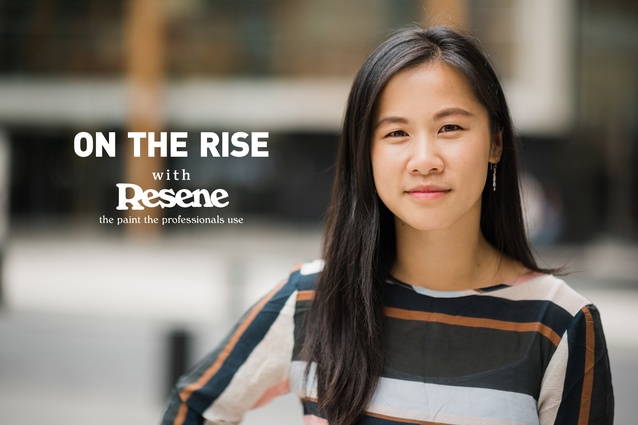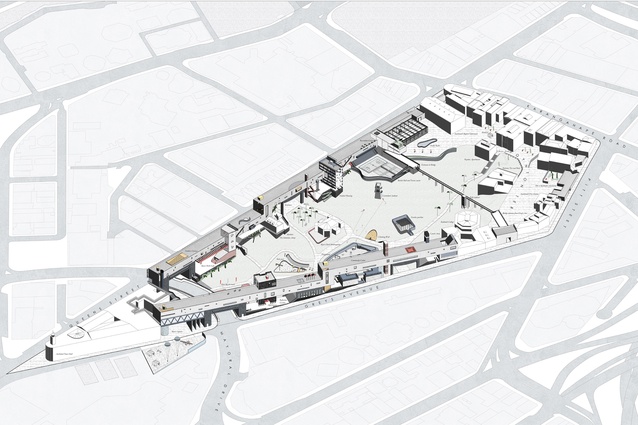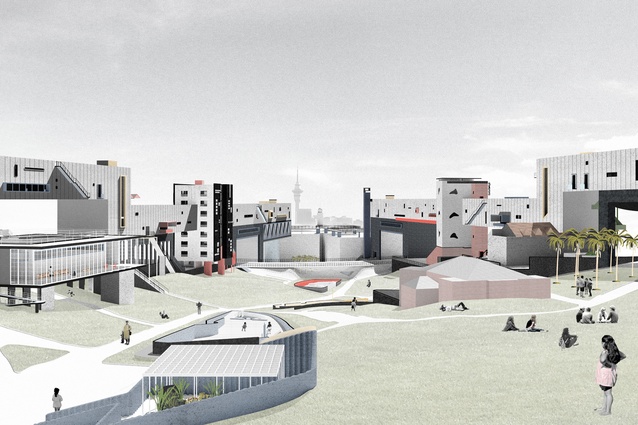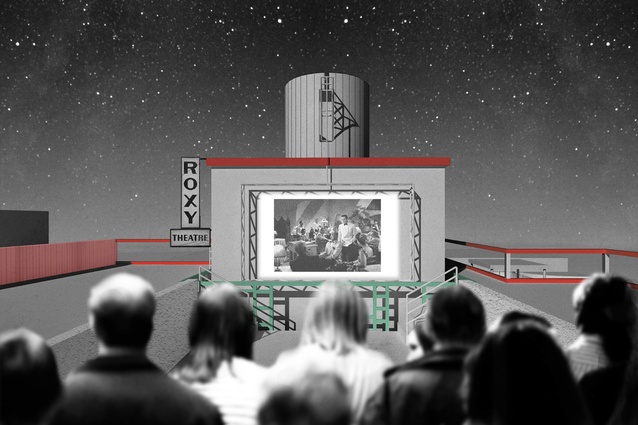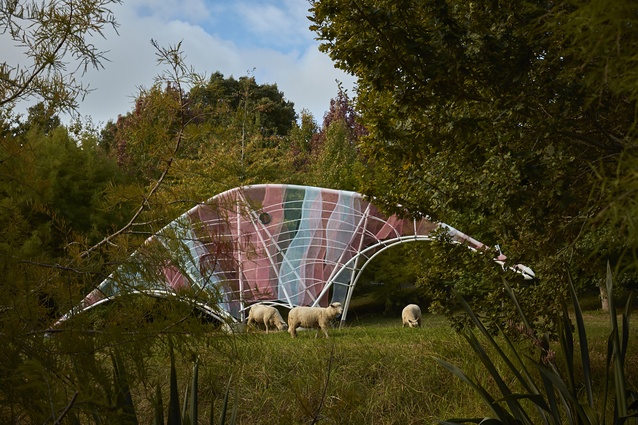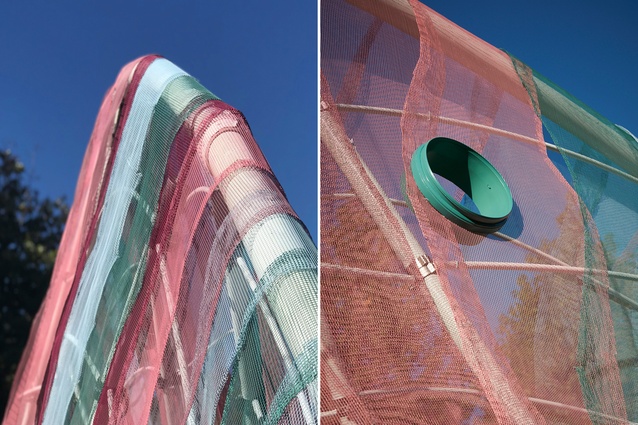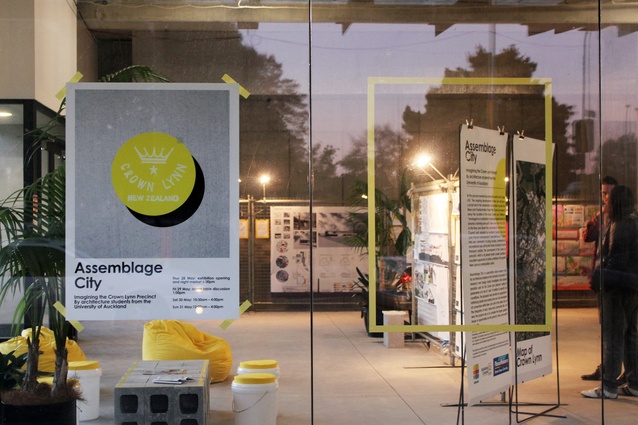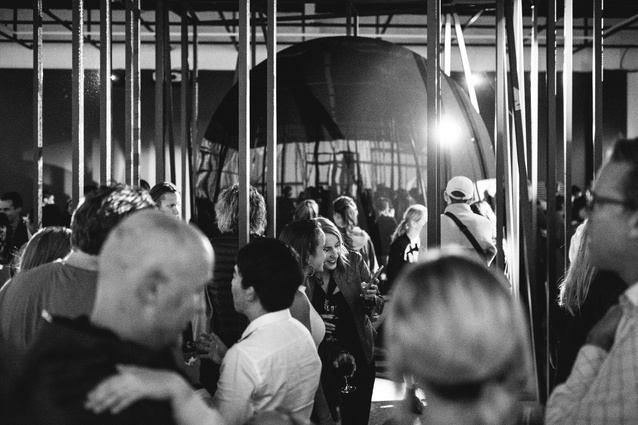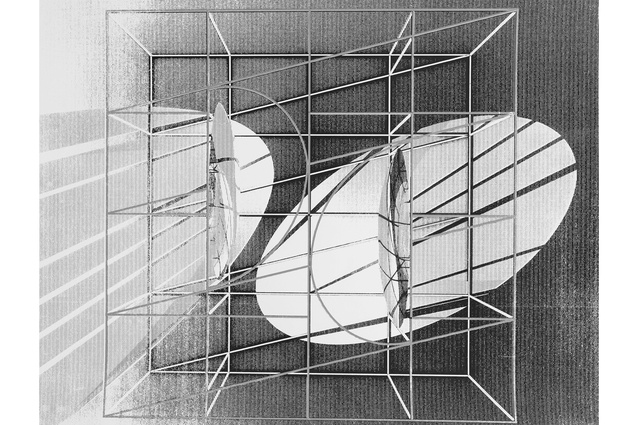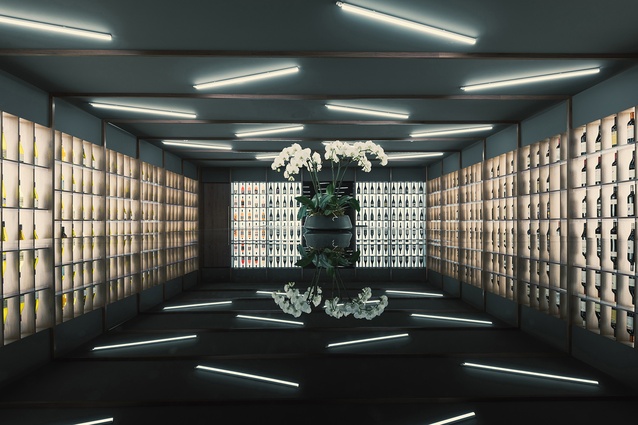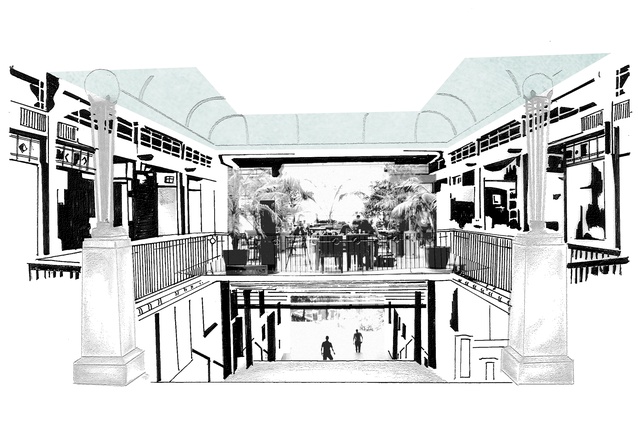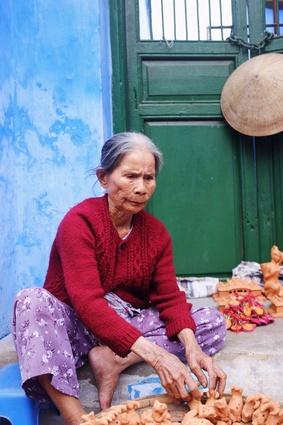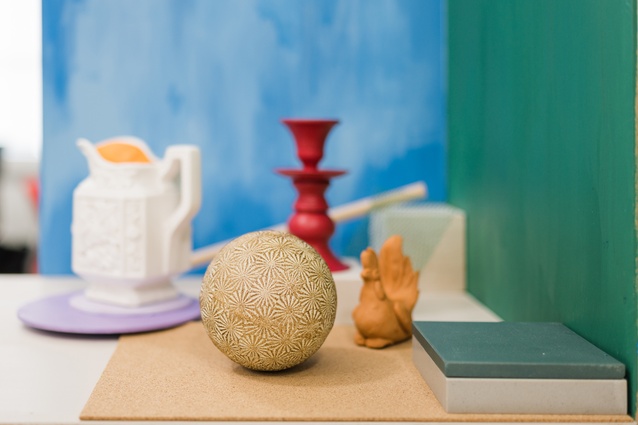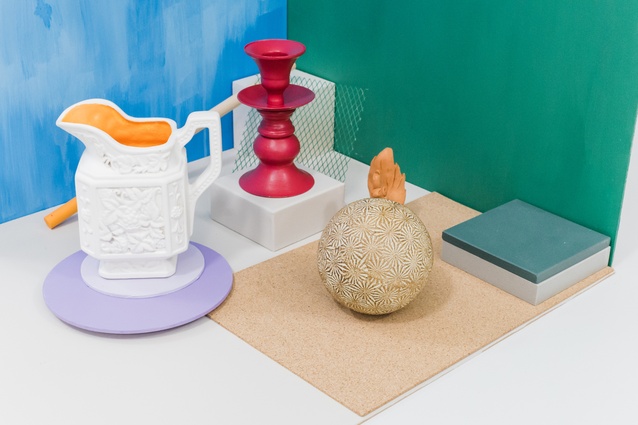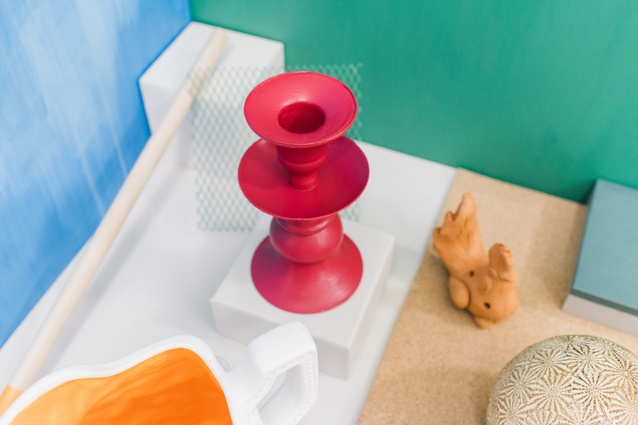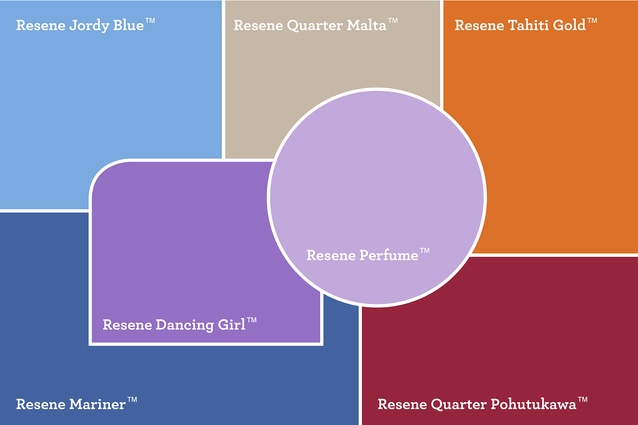On the Rise: Kim Huynh
The ArchitectureNow On the Rise series, supported by Resene, puts the spotlight on up-and-coming designers across the country. Now on to the 12th in the series, Ashley Cusick catches up with Kim Huynh, an architectural graduate at Paterson Architecture Collective (PAC Studio) in Auckland.
Ashley Cusick (AC): What first drew you to architecture?
Kim Huynh (KH): I really enjoyed graphics and design at high school and I would spend hours just building and designing a tree house or something like that. Very early on, I knew I was interested in spaces and had a real commitment to the design process. I was really rigorous and would spend hours at the drawing board. It became clearer in high school because I was into art, and then I got into graphics. A teacher of mine said I should look into architecture and that made me curious.
One vivid memory I have was that I went to visit the architecture school and I got locked inside the studio space. I saw all the students’ presentations being pinned up on the boards and I knew that was exactly what I wanted to do.
AC: Did you have any other creative influences in your life growing up?
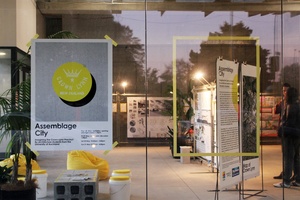
KH: My parents wanted me to become a doctor. I was somewhat on the path of going into the medical field, but I just knew I had a passion for designing. Architecture definitely combines the science side and the creative side. It has that logic and rigorous thinking and it is still very open. I think it really fit me well with my logical side needing factual information and then the looser end where you are just freely designing.
AC: You still do quite a bit with the university and you were judging for the Auckland Architecture Association Visionary Architecture Awards this year. What encourages you to keep those links strong?
KH: I really enjoy teaching at the university. I actually spent a year and a half tutoring after I finished my Master’s degree. During that time of giving back to the students, you realise that they have so much creative potential and investigation. Being in practice, sometimes you don’t get that; so, I always go back to the university. It is quite refreshing to see what students have been doing and the sheer breadth and depth in projects that you don’t necessarily always see in practice.
AC: How did you get involved with PAC Studio?
KH: Aaron Paterson was my design tutor in fourth year. I was also involved in a live project in third year with a tutor called Mike Davis that, at the end, was taken by an architect; Aaron took that project and I got to intern over the summer with their practice to work on it. So, I had a close connection with Aaron and also taught a drawing paper with him, and he offered me a job.
AC: Did you take that year out to teach after your Masters intentionally, or were you planning on going into practice right away?
KH: It was slightly intentional, just to have a rest and a bit of a break after my studies. Also, I was quite interested in getting into academia as a path, so during that time I wanted to explore a little bit what it would be like. I knew I would get into practice but I just didn’t know when.
AC: PAC is a more experimental practice than some others. Do you get to do any research or exploration through your work here?
KH: Yes, because both Aaron and Sarosh [Mulla] are part-time lecturers in addition to running this practice, we get to do really cool projects like exhibitions and installations. I get to be involved in a little bit of research but also working with different medias. I got to work on Aaron’s Penumbral Reflections project. I helped him with his screen prints and figuring out how to use Photoshop to get the different tones.
AC: Do you feel like this kind of practice suits you better than a more traditional one?
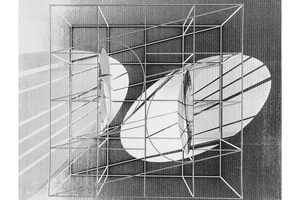
KH: It is quite unique in Auckland. I think in Melbourne there are a lot of these kinds of practices that are research-based as well as design- and real world-based. I don’t think there are many lecturers at the university that also have a practice. They do something quite different. I feel like you are not just pumping out work all the time, but you do different things, which allows you to have a wide variety of experiences.
Also, you get to give back to the university, which is great. It’s important to give back to students because I feel like sometimes there is a disconnect between working and university. When you get someone that is practising and is also giving back to the community of academia, you really see the link in how practice is research at times.
AC: What kinds of challenges have you faced since moving on from university and working in practice?
KH: When you are a graduate you are constantly faced with challenges because everything is so fresh. You are diving into something for the first time, pretty much, and you have to overcome all these hurdles. I remember one of the biggest challenges when I first started was figuring how to use the computer and use BIM software.
As I progressed, the next challenges were probably detailing and understanding the processes of construction. When you start with the foundation, then the walls, then the roof, everything has a step and you can’t just miss a step. You have to set everything accordingly there is a rigorous way of approaching the work.
I think my current challenge is probably understanding and overseeing the different construction phases now. How a project finishes and project observation. You are looking at working with builders on site, communicating with them, having regular site meetings, which is a huge challenge. Sometimes you don’t know what you’re talking about or you don’t know the answer to a question, so you have to say ‘I’ll get back to you’. They are constantly throwing questions at you because it is changing so fast. I am really learning a lot through that.
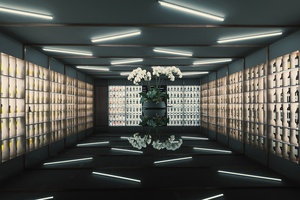
AC: You have been able to work on both interior design as well as architecture while working at PAC Studio. Do you have a preference for working on one or the other?
KH: I think you need both. I like working with both because they influence each other. I have done more of the exterior work recently, but working on The Wine Cave was a really good project. I really enjoyed that. With interior projects, they are quite fast paced so you can make decisions – like materials and colours – quite fast. When it is already constructed there is a faster impact, whereas when you are doing the whole package it takes a long time.
AC: What is the most exciting part about architecture to you?
KH: We are so broad as a profession. We are kind of like generalists in some ways. We have the great vision, and we have to figure out how to carry it out with all these specialities that come in. It is cool that we get to know so much about different parts of a building and the processes within a building. It is also exciting to see something physically built and getting something realised.
We are quite tactile, we get to feel things out, see things and feel the atmosphere of the space and then people can inhabit the space and enjoy it. That is the really great thing about architecture. I’ve noticed when I go travelling I appreciate different buildings and spaces, and I’m more aware of my surroundings and the environment.
AC: What did you work on for your Master’s thesis?
KH: I focused on architectural strategies in which you are creating collective spaces. So, I looked into collective spaces into the city and how we can encompass the pluralities of an individualised society, while still offering a cohesive urban framework.
AC: Does that lean more toward the urban planning side of design?
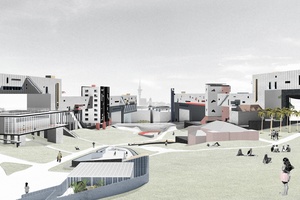
KH: It kind of blends the two. Sometimes in the city we are too individualised and there is nothing that you can look at and collectively say, ‘This is a cohesive space’. When you go to the Britomart precinct, for example, you know that each part belongs because there is a cohesion to it. On the other hand, with too much cohesion, you don’t want to lose the individuality and idiosyncratic moments. I guess, with cities, I am trying to figure out how we can have that consistency but still have an individual element to it.
AC: How did that relate back to Auckland?
KH: I have realised that Auckland is a bit crazy as a city. We just kind of build things that pop up. So, I think that our city planning is more individualised and there are not many key points. Architecture gets lost, I feel. In my thesis I tried to think about elements of city planning from around the world and how we would implement it back into Auckland.
AC: I suppose that kind of strategic thinking will always be a part of your design philosophy, but how do you take that in to your practice?
KH: When I think about architecture, I always think of it in terms of fragments, and I consider how those fragments come together as a whole. I haven’t been working on big projects with the city, but even with residential projects, I would still look at the finer parts of the individualised elements. Then, I always think about how that would affect the whole vision of the thing or the bigger vision of the design and how that small element can add to the cohesion of it.
AC: You participated in the Brick Bay Folly last year. What was the experience like? How did your team come together?
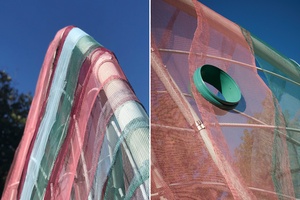
KH: I had been interested in the Brick Bay Folly competition after hearing a lot about it throughout my studies. It was just a group of friends from university and we decided to enter it. We never expected we would win because we did something kind of crazy: we proposed to use PE plastic, which isn’t your usual material. We designed a structure with all these ribs and curved elements and a cantilever. When we got picked we were like, “What? Really?” We had no clue how to actually build it.
For about four months, we were prototyping this huge thing. We went to Unitec, which had a large gym space, and we bought long pipes of plastic to work with. Honestly, we just started testing it and hoping it would stand up, strengthening it at parts. It was really trial and error to figure out how it would stay upright.
AC: Has that experience taught you things that you’ve brought back into your work?
KH: The cool thing was that you couldn’t just rely on yourself; you have to rely on the different strengths within your team. I had four people – Norman, Kevin, Cynthia, and myself. Norman was the visionary; he knew what he wanted it to be like, but didn’t know exactly how it would be put together. Then you had Kevin, who was really into construction and fabrication. I was very good at detailing and understanding how everything fits together, but you also need someone that is highly skilled at managing and organising. Cynthia was the one who was so organised and got the materials delivered on time; she even got food sorted for us and worked out all the logistics. Everyone has something to contribute and that is definitely true in practice as well.
It was so enjoyable. I think as a graduate you don’t get much opportunity to build something by hand. By actually building something, you learn so much through that process: even things like gravity, how things are put together, what details, how one thing fits with another. That has informed my work a lot as well.
AC: What are your goals for the future of your career?
KH: I am working towards getting registered and my company is really helping towards that. I’d also like to find a way to balance the academia side of things with working in practice.
AC: Do you have a vision of what kinds of projects you’d like to work on in the future?
KH: I would like to do everything to be honest. With every side of the work there is a new set of skills you learn. I haven’t done any commercial projects yet, but hopefully I can in the near future. That requires you to work with a lot more consultants and understand management to a T.
I want to work on more community projects as well. I want to understand how a piece of work can give back to the community and how people would be utilising it. I recently went to the Philippines, and they have different ways of construction and fabricating things using local materials. There is a wealth of knowledge everywhere around the world. I would love to be learning more about how a space can be livened up and give back to the community and give back to the civic areas around it.
AC: As part of our On the Rise series, we ask participants to create a mood board using Resene colours. Tell us about what you created and how you chose the colours you used.
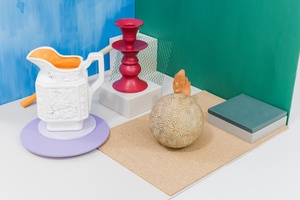
KH: My mood board is a composition of domestic scale objects that animate the scene with different formal and chromatic qualities. I was inspired by the painting and architecture of Italian architect Aldo Rossi with his use of bold colours and reductive geometric forms.
The colour palette draws upon a photo I took of a woman selling terracotta whistles, during my recent trip to the ancient town of Hoi An, Vietnam. I was compelled by the unique combination colours that ranged from the vibrant blue and magenta to lighter beige and mauve tones.
AC: What advice would you give to students who are studying architecture or are thinking about pursuing architecture as a career?
KH: I would say there is more to the profession than design. Architecture is about all the different skills that you learn along the way, even communicating with clients, consultants, management, administration. When you get into practice, don’t be afraid to ask questions, even stupid questions, because that is the best way to learn. Always be curious about things and know that you will be learning for a lifetime and that these skills take time to develop, so don’t be unmotivated.

